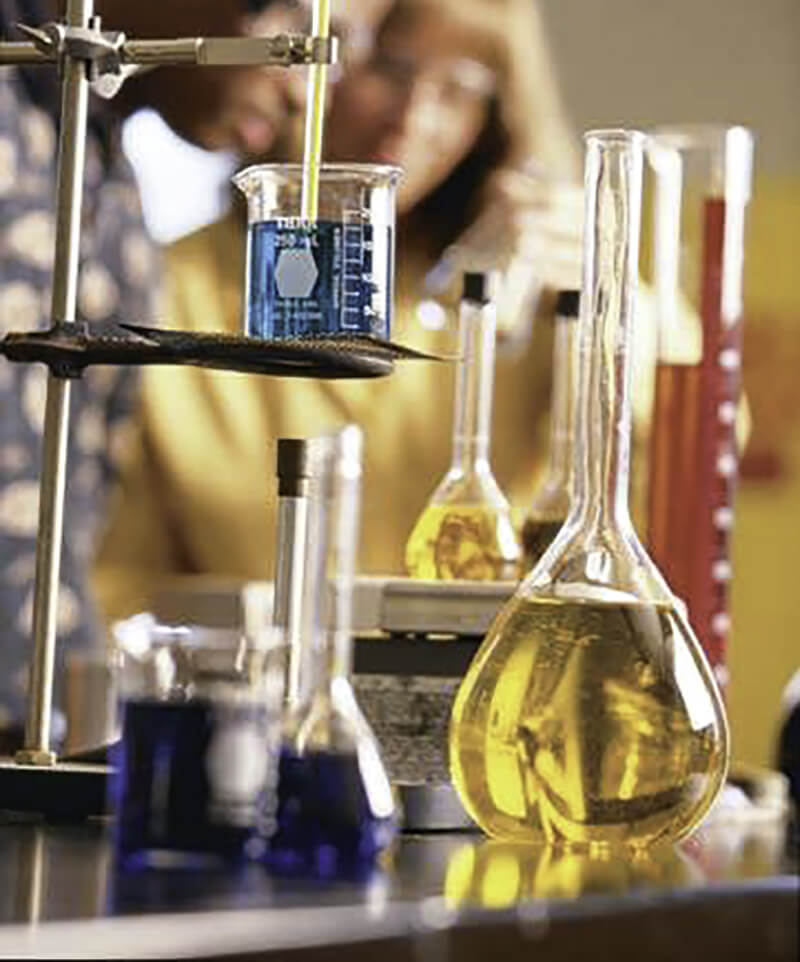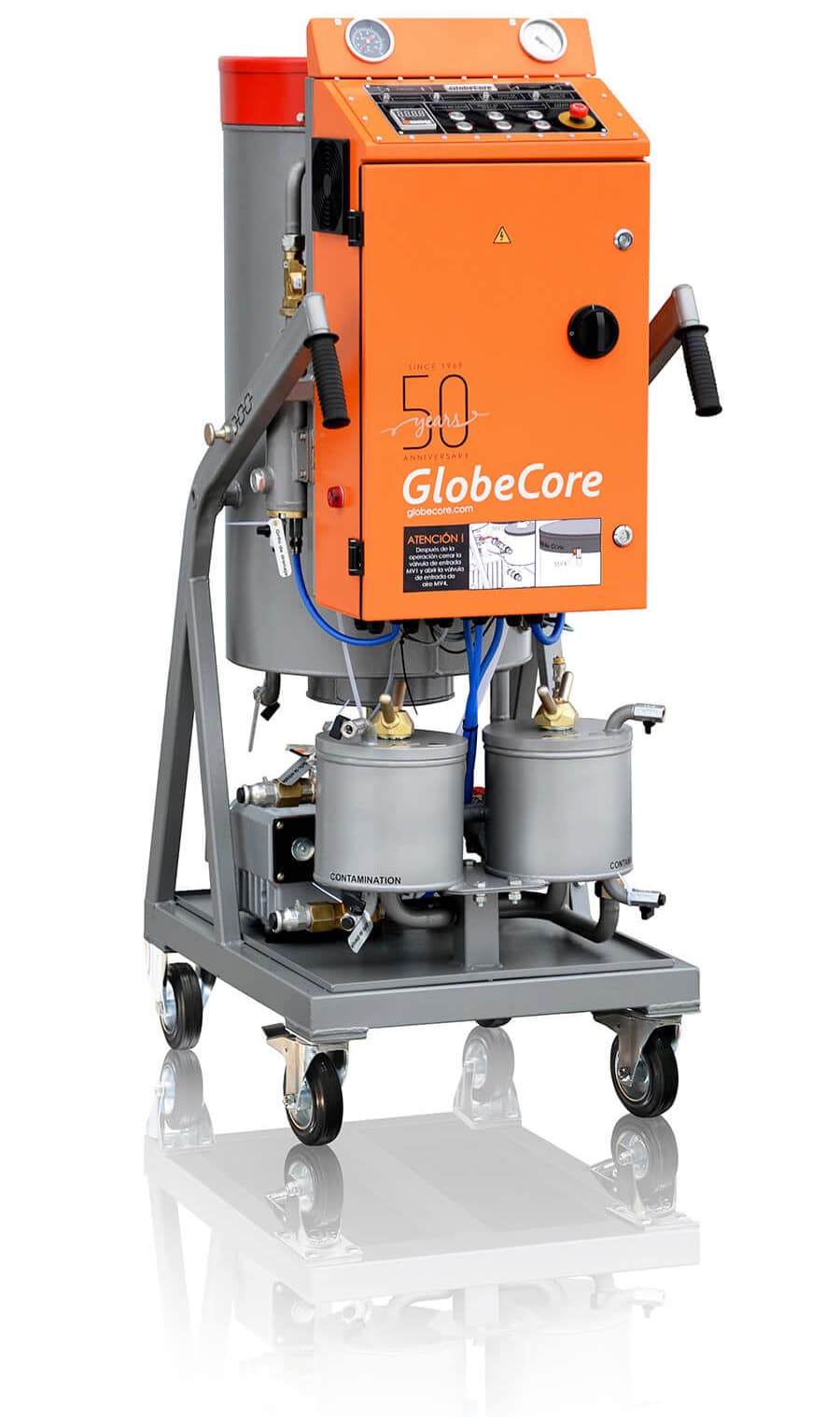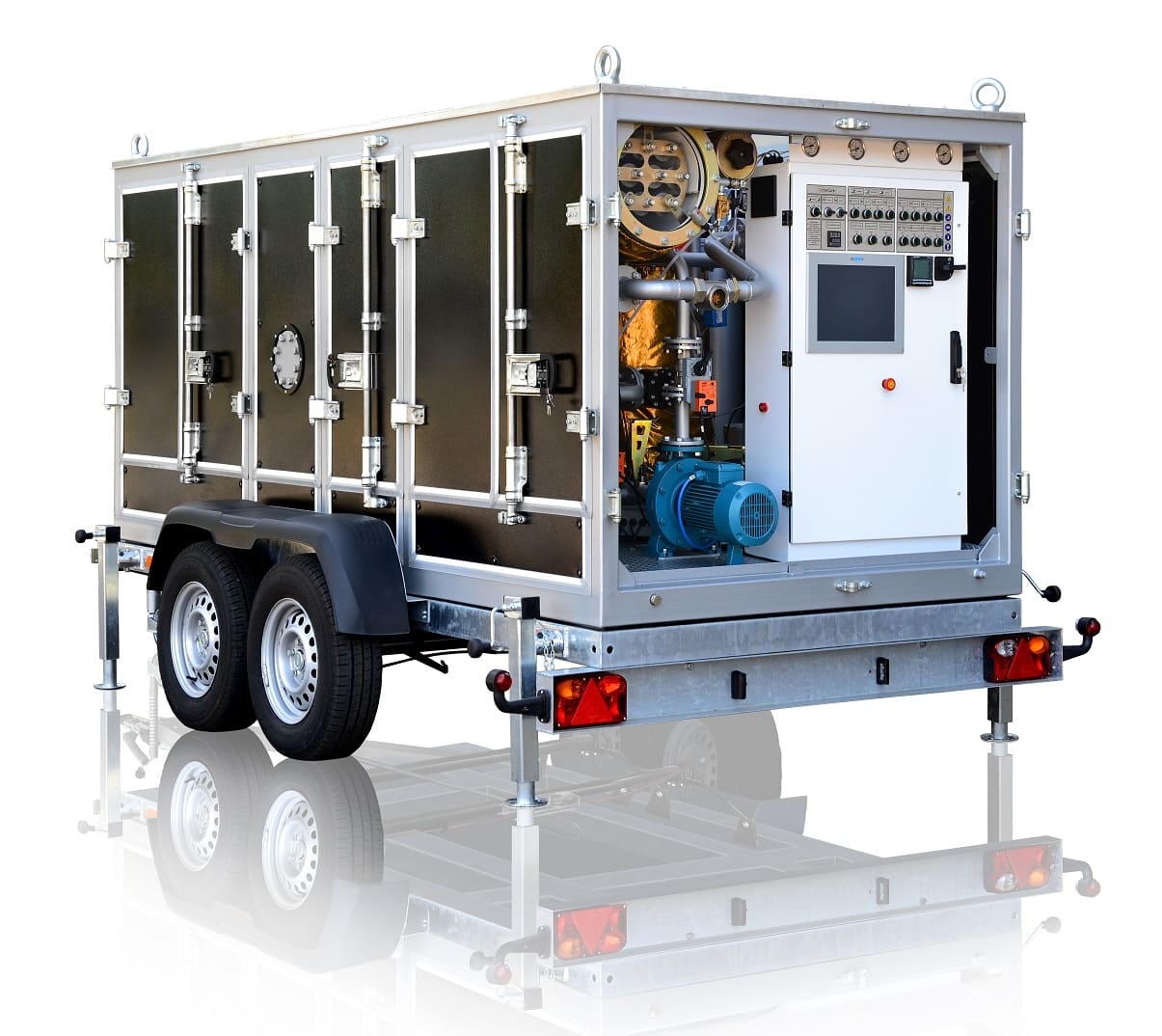It is common knowledge that moisture significantly reduces the insulating properties of transformer oil. The influence of moisture in oil is different depending on the temperature and the amount of moisture and the state it is present in a dielectric fluid.
The moisture in oil can be present in three states: emulsion, solution and sedimented (settled at the bottom of the tank). Emulsified water significantly reduces dielectric strength of oil. Dissolved water and sediment do not affect the breakdown voltage of transformer oil, however with high temperatures moisture can disperse. Therefore, the maximum allowable moisture content in oil should be below 0.001%. It is not only water by itself that influences insulating fluid. Water interacting with a variety of impurities, products of oxidation and decomposition determines the degree of influence on the dielectric strength of insulating oil.
At the same time, it has been proven that carbon molecules in oil have the ability to absorb and retain 30-40% of the moisture. Also moisture in oil is absorbed by polar substances in oil. Thus, it is impossible to determine the exact amount of water in a liquid dielectric by any known methods.
Bound water greatly reduces the dielectric strength of oil and the resistance to partial discharges in hard insulation.
It should also be noted that at minus temperatures water turns from the liquid aggregate state to solid, which can cause damage to the windings inside the tank.
Methods to determine moisture content in oil
Moisture determination is carried out through three main methods. The first is based on the extraction of oil samples and chemical analysis. This method is carried out in two ways:
- A calcium hydride test measures moisture content in oil reacting with calcium hydride and releasing hydrogen gas;
- Karl Fischer titration is based on moisture in oil interacting with the titrant (containing iodine and sulfur dioxide dissolved in methanol). The moisture content is calculated according to the amount of water expended on electrolysis. The method is more accurate than the previous one, but is not suitable for oxidized oils.
The second method is gas chromatography that analyses the distribution of gases in liquid phase.
The third method is based on electrical conductivity as water is more conductive than oil with the AC/DC equipment sensing changes in a sample due to moisture saturation of oil.
Drying of transformer oil
Before being filled into the power equipment, the oil is checked for impurities, decomposition products, gases and dissolved water. And although many years of experience showed that it is impossible to completely get rid of polluting elements, you can still improve the quality characteristics of the used and fresh oils
The methods used to remove moisture in oil are a thermal vacuum dehydration and absorption purification.
The principle of the first method is based on the separation of moisture from oil under vacuum. The oil containing water is sprayed in a vacuum column, where the water evaporates, and the dried oil precipitates to the bottom of the chamber.
The effectiveness of this method increases when oil is heated to a higher temperature. Heating evaporates more moisture, and loses less oil.
The second method, namely the drying of electrical insulation with adsorbents, is the most common among power engineers today. The adsorbents used for oil purification are artificial or natural minerals. Due to their absorbing properties, they collect moisture and some impurities that contaminate the oil on their surface. One of the most common adsorbers of this class is zeolite.
The microporous structure of zeolite surface allows to absorb and release a large amount of moisture. Zeolite absorbing surface is more than half of its total volume.
Dehydration of transformer oil with zeolite:
- pore spaces are determined by structure of zeolite
- effective interaction with water molecules;
- when heated demonstrates high moisture absorption;
- zeolite reactivation allows its repeated use;
- fast adsorption processes;
- maintaining a high degree of purification throughout;
- low power consumption.
Removing moisture in oil with GlobeCore equipment
Special plants have been developed for transformer oils purification from aging and decomposition products with the help of zeolite.
GlobeCore developed a special ZP – plant for oil regeneration with zeolite. It cleans insulating oils with viscosity below 70 cSt at 50 ° C and removes moisture and also products of aging and oxidation (mechanical impurities, air, aging products of equipment).
The unit consists of a heating and filtration section, and a section with sorbent cartridges. It is also equipped with spare parts:
- a cross-joint;
- a heating element;
- cuffs;
- A check valve;
- A gasket pump.
The zeolite oil drying unit MCU operates in two modes:
- heating and filtration;
- deacidification.
The processing rate is 4.3 m3 / h. The oil purity is shows in a moisture content below 10 g / t (with an initial moisture content below 50 g / t) and filtration fineness 5 μm.
The operation of the GlobeCore MCU-4.3 require the following safety requirements:
- operation and maintenance is done only by personnel familiar with technical documentation on the use of this equipment;
- proper grounding of equipment;
- exit valves are closed before operation;
- maintenance and repair work is done only on switched off equipment.
Equipment for drying zeolite after adsorption
The advantage of zeolite over other adsorbents that remove moisture in oil is its ability to be reactivated and reused. Zeolite reactivation equipment such as a drying cabinet SSC-15 from GlobeCore is used for preliminary drying of zeolite and deep dehydration.
It is a metal cabinet that is a drying chamber with heaters installed at both sides. The back panel is equipped with a fan. It drives the air from the electric heaters and back through the side openings in the cabinet walls. A zeolite drying cabinet is equipped with a control panel that is attached to the cabinet in a separate container.
Each regeneration cycle uses less than 130 dm3 of zeolite.
GlobeCore constantly works on improving its equipment and is ready to cooperate with companies engaged in the repair and maintenance of transformer equipment, taking into account the wishes of each customer.


 CMM-0.6L Oil Degassing ...
CMM-0.6L Oil Degassing ... CMM-10 mobile oil ...
CMM-10 mobile oil ...